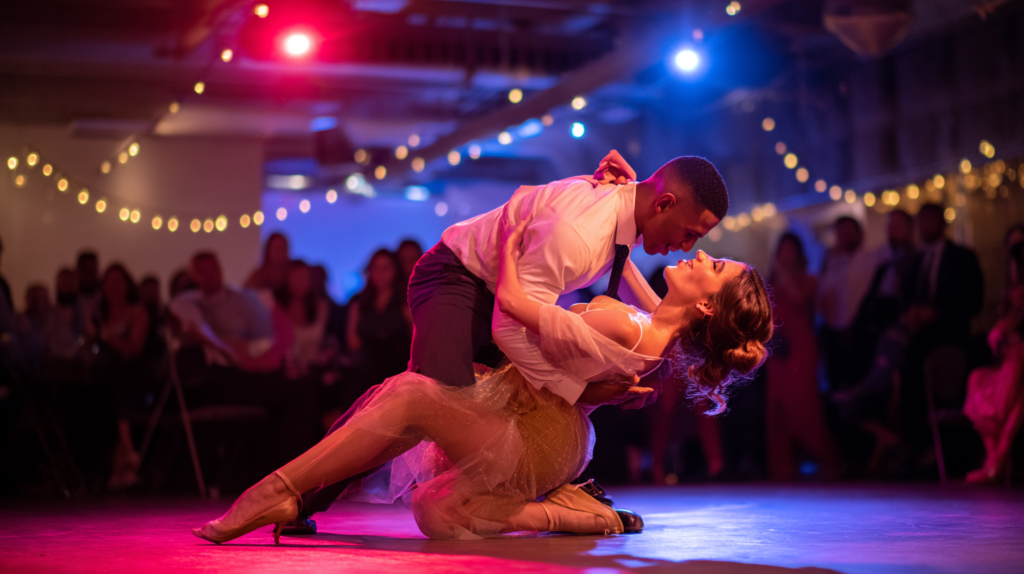The first dance is a moment of magic — the lights dim, the music swells, and the newlyweds take the floor, eyes locked and hearts full. But have you ever wondered where this tradition came from, or how it’s changed over time?
The history of wedding first dance traditions is rich, romantic, and full of surprises. From regal waltzes to viral TikTok mashups, the evolution of the first dance reflects shifting styles, music trends, and how couples choose to express their love.
At Wedding Dance Sydney, we love helping couples create a modern moment that honours tradition — while making it totally their own. Here’s a look at how the first dance has transformed through the decades.
1. 19th Century: Ballroom Origins and Aristocratic Roots
The concept of the first dance originated in royal courts and high society. At formal balls, it was tradition for the guest of honour or hosts to open the dance floor — a symbolic gesture of elegance and unity.
Key traits:
-
Highly structured
-
Waltzes and quadrilles
-
Performed only by the elite
This tradition slowly made its way into wedding celebrations among the upper class — and eventually became more widespread.
2. 1920s–1930s: Jazz Age Energy
As jazz swept through America and Europe, dance became more expressive and social. Wedding dances started to include swing, foxtrot, and even Charleston influences.
Popular first dance elements:
-
Upbeat jazz music
-
Playful footwork
-
Less rigid, more celebratory
Couples still honoured the tradition — but brought personality into it.
3. 1940s–1950s: Classic Romance and Big Bands
Wartime love stories and the rise of big band music brought a return to slow, sentimental dancing.
Characteristics:
-
Songs like “Unchained Melody” or “At Last”
-
Simple box step movements
-
Close embraces and emotional expression
This era solidified the “slow first dance” as a wedding staple.
4. 1960s–1970s: Rock ’n’ Roll and Rebellion
With cultural revolutions and the rise of personal expression, weddings became less traditional. The first dance followed suit.
Common changes:
-
Couples chose personal love songs over traditional waltzes
-
Music included Beatles, Motown and rock ballads
-
Some skipped the dance entirely to avoid formality
The first dance was no longer a requirement — but a personal choice.
5. 1980s: The Era of Pop Ballads
Enter the power ballad. Synth-heavy slow songs ruled the charts and the dance floors.
Wedding dance trends:
-
Songs by Whitney Houston, Phil Collins and Lionel Richie
-
Choreography became more dramatic
-
Couples began taking basic lessons to prepare for their dance
It was the start of the “planned” first dance era.
6. 1990s: The Rise of Wedding Dance Lessons
By the ’90s, dance studios offered wedding dance packages, and more couples started seeing the first dance as a performance moment.
Notable features:
-
Crossover between ballroom and contemporary moves
-
Soundtrack love songs and radio hits
-
Rise of professional instruction
Couples wanted to look good — and lessons became a common part of planning.
7. 2000s: YouTube and Viral Choreography
With platforms like YouTube, first dances became a place to wow.
Popular trends:
-
Mashups and surprise routines
-
Groomsmen joining in for choreographed numbers
-
Flash mobs and themed performances
The line between wedding and entertainment started to blur — in the best way.
8. 2010s: Personalisation Takes the Lead
Couples leaned into storytelling, emotion, and uniqueness.
Highlights:
-
Mixed-genre routines
-
Live band or acoustic arrangements
-
Including family or bridal party in the dance
The first dance became less about perfection, and more about personality.
9. 2020s: Anything Goes (Including Not Dancing at All)
In today’s weddings, there are no rules. From barefoot beach dances to choreographed fusion mashups, couples are embracing complete freedom.
Current trends:
-
LGBTQ+ inclusive choreography
-
Gender-neutral lead/follow roles
-
Slow-to-fast transitions
-
“Private first dances” before guests arrive
It’s not about tradition — it’s about intention.
Conclusion
The history of wedding first dance traditions shows us how love, culture, and music have shaped one of the most iconic wedding moments. Whether you want a romantic sway, a full-blown production, or something in between, your first dance is yours to define.
At Wedding Dance Sydney, we help couples create a first dance that feels timeless, personal, and unforgettable — no matter the decade you’re inspired by.
FAQ
The tradition originated in European royal courts and high society, where the hosts would open formal balls with a waltz. Over time, this custom made its way into wedding celebrations.
Slow, romantic songs accompanied by a basic box step or foxtrot were popular. Couples danced to big band music and crooners like Nat King Cole or Ella Fitzgerald.
The ’80s brought pop ballads and more dramatic, emotional choreography. Couples started taking lessons and often chose songs with big builds and heartfelt lyrics.
Wedding dance lessons became more mainstream in the 1990s, when couples began wanting polished routines. Studios started offering wedding-specific packages tailored to beginners.
With the rise of YouTube in the 2000s, couples began sharing creative, surprising first dances. Mashups added entertainment and personal flair, often becoming viral hits.
Modern trends include mashups, personalised choreography, LGBTQ+ inclusivity, surprise lifts, and private pre-ceremony dances. Anything goes — as long as it feels authentic to the couple.
Of course! Waltzes and foxtrots remain elegant, timeless choices. At Wedding Dance Sydney, we help couples honour tradition or modernise it with a personal twist.
That’s totally okay. Some couples skip the first dance altogether, or do a short, intimate sway without choreography. Your wedding should reflect your comfort and style.
Absolutely. Many couples today mix genres — starting slow and transitioning into upbeat routines. We specialise in creating seamless transitions between styles for maximum impact.
That depends on your taste! Romantic types may love the ’50s or ’80s ballads. Creative couples may look to the mashups of the 2000s. We help you find a style that suits you perfectly.
